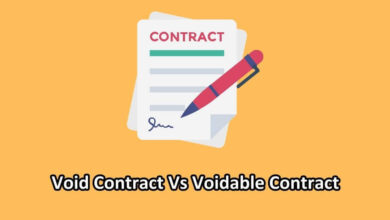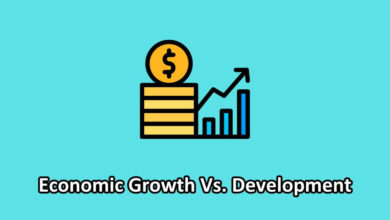In today’s dynamic world, where decisions shape the course of actions, understanding the intricate dance between policy and strategy is paramount. Imagine a world where every action lacks direction or purpose—chaos ensues. Just as a captain relies on a compass to navigate the vast ocean, organizations, businesses, and governments depend on the synergy of policy and strategy to chart their course in an ever-changing landscape.
Policies and strategies serve as the guiding lights for organizations, outlining the rules and the roadmap to success.
Policies set the rules of the game, defining what’s acceptable and what’s not, while strategies provide the playbook, detailing how to achieve goals within those established boundaries.
Policy Vs. Strategy (A Comparison)
| Policy | Strategy |
|---|---|
| Policies are a set of guidelines, rules, or principles that define the boundaries and standards for decision-making within an organization. | Strategy is a dynamic and proactive plan of action designed to achieve specific objectives. |
| Policies set boundaries and rules, defining the scope of acceptable actions. | Strategies delve into specifics, outlining steps to achieve defined objectives within policy boundaries. |
| They are generally stable over time, providing a consistent framework. | They are dynamic and adaptive to changing circumstances and evolving goals. |
| The approach of policies is more normative and prescriptive, defining what is allowed, prohibited, and expected standards. | A Strategy has a more dynamic and proactive approach, and action-oriented plans designed to achieve specific objectives. |
| The policy primarily focuses on the 'what'—what is allowed and prohibited, providing a clear framework for decision-making. | Strategy primarily focuses on the 'how'—how to achieve goals and respond to challenges, emphasizing methods and actions. |
What is a Policy?
A policy is a set of guidelines, principles, or rules established by an organization to regulate its actions. Essentially, it acts as a framework that defines acceptable behaviors, decision-making processes, and the overall direction of an entity.
Objectives of Policies
The primary objectives of policies are to create a standardized framework, ensure compliance with laws and regulations, mitigate risks, and promote consistency in decision-making. They offer a sense of order, helping organizations operate smoothly.
Examples of Policies
Examples of policies abound across various sectors. In a workplace, a dress code policy ensures a professional atmosphere, while a data protection policy safeguards sensitive information. In the government, fiscal policies dictate economic strategies, ensuring stability and growth.
What is a Strategy?
Unlike policies, strategies are action plans designed to achieve specific goals. A strategy outlines how an organization will deploy its resources, make decisions, and gain a competitive advantage in pursuit of its objectives.
Objectives of Strategies
Strategies aim to optimize an organization’s resources, capitalize on strengths, and navigate challenges. They provide a roadmap for achieving long-term goals and adapting to changes in the environment.
Examples of Strategies
In the business realm, market penetration strategies focus on expanding market share, while diversification strategies involve entering new markets. Military strategies involve tactics for achieving objectives on the battlefield, showcasing the versatility of strategic thinking.
Key Differences Between Policy and Strategy
- Focus: Policies focus on the ‘what’—what is allowed, and what is prohibited. On the other hand, strategies focus on the ‘how’—how to achieve goals, and how to respond to challenges.
- Flexibility: Policies offer stability and consistency. In contrast, strategies demand flexibility, allowing for adjustments as circumstances change.
- Hierarchy of Plans: Policies typically occupy the top tier in the hierarchy of plans within an organization. On the other hand, strategies operate at a lower level in the hierarchy, beneath policies.
Relationship Between Policy and Strategy
A. Complementary Roles
Policies and strategies are symbiotic, with policies providing the rules and strategies offering the actions. They work hand in hand, ensuring organizations operate within ethical and legal boundaries while actively pursuing their goals.
The success of a strategy often relies on the foundation laid by policies. A well-crafted strategy aligns with established policies, ensuring that actions are not only effective but also ethical and compliant.
Policies influence the parameters within which strategies operate. Conversely, strategies may reveal gaps or areas for policy improvement. The two constantly interact, refining each other in a continuous loop of adaptation and enhancement.
Practical Applications
A. Business Context
In the business world, policies ensure ethical practices, compliance with regulations, and a positive workplace culture. Strategies, on the other hand, drive market competitiveness, innovation, and sustained growth.
B. Government and Public Policy
Governments use policies to shape societies, enforce laws, and provide public services. Strategies within government focus on economic development, national security, and international relations.
C. Nonprofit Organizations
Nonprofits deploy policies to ensure transparent governance and adherence to their mission. Strategies guide their efforts in fundraising, community engagement, and achieving social impact.
Conclusion
In conclusion, the dance between policy and strategy is the heartbeat of organizational success. Like yin and yang, they balance each other, providing the stability of rules and the dynamism of actions.
As we navigate the complexities of today’s world, understanding, and mastering this interplay is key to triumph in any endeavor. The bridge between policy and strategy is not just theoretical; it’s the very path to prosperity.



